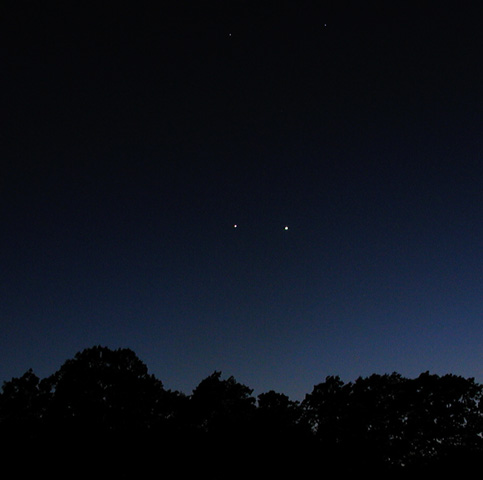Venus orbits closer to the Sun than Earth, so explaining how to find Venus in the sky is pretty easy. It will be fairly close to the Sun. Venus orbits the Sun faster than the Earth so it will either appear in the sky in the West in the evening or rise before the Sun in the East.
To pinpoint the location of Venus you can use some form of planetarium software like Starry Nights or you can do it the old fashioned way and train your telescope yourself. There are a few things to consider when doing that. The first is to understand what ecliptic plane is. When you trace the path of the Sun across the sky, its path is a line called the ecliptic. The ecliptic changes slightly throughout the year. It actually rises and falls. The highest point occurs at the summer solstice, while the lowest position happens six months later at winter solstice.
Most celestial bodies are most easily observed during an elongation. An elongation occurs when an inferior(closer to the Sun) planet’s position in its orbital path is at tangent to the view from Earth. Because they are inside the Earth’s orbits their positions are never very far from the position of the Sun. When a planet is at elongation, it is furthest from the Sun as viewed from Earth, so it’s view is best at that point. There are two kinds of elongations. The Eastern Elongation occurs when the planet is in the evening sky and the Western Elongation occurs when a planet is in the morning sky. This paragraph assumes that we are talking about viewing from Earth. The apparent motion of objects in the sky due to the rotation of the Earth is 15 degrees per hour. Venus is not visible against the Sun’s background light until it is 5 degrees from the Sun, so it can not be seen until 20 minutes after sunset or before sunrise. At its greatest eastern and western elongations, Venus is between 45 to 47 degrees from the Sun and moves 3 hours 8 minutes behind or in front of the Sun. That only leaves about 2 hours and 48 minutes of observation in a given day.
Once you know how to find Venus in the sky, you will need a telescope to see anything other than a light in the sky. Also, you should have a planetary filter or off-axis mask. Still, it might be best to invest in a telescope with an automatic tracking system so that you can focus all of your attention on observing and not be constantly adjusting your scope. Good luck on your quest to observe Venus.
We have written many articles about Venus for Universe Today. Here’s are facts about Venus.
If you’d like more information on Venus, check out Hubblesite’s News Releases about Venus, and here’s a link to NASA’s Solar System Exploration Guide on Venus.
We’ve also recorded an entire episode of Astronomy Cast all about Venus. Listen here, Episode 50: Venus.
References:
http://planet-venus.net/index.php?document_id=100
http://www-istp.gsfc.nasa.gov/stargaze/Secliptc.htm

